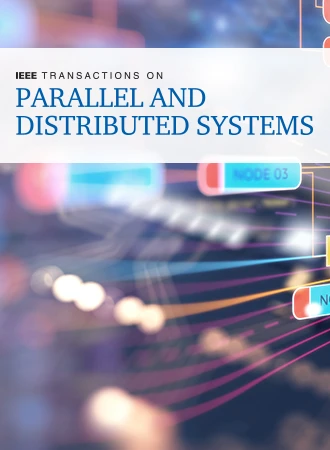区块链分片的分析建模和吞吐量计算
IF 5.6
2区 计算机科学
Q1 COMPUTER SCIENCE, THEORY & METHODS
IEEE Transactions on Parallel and Distributed Systems
Pub Date : 2024-03-12
DOI:10.1109/TPDS.2024.3376452
引用次数: 0
摘要
分片技术在扩展区块链方面显示出巨大的潜力。它将节点分成较小的组,允许部分交易处理、中继和存储。因此,我们将并行运行多个区块链,而不是运行一个区块链,并将每个区块链称为一个分片。分片可用于解决区块链中三种资源(即计算、通信和存储)强制性重复造成的缺陷。目前,区块链中最紧迫的问题是吞吐量。在本文中,我们提出了新的队列理论模型来推导分片区块链的最大吞吐量。我们考虑了两种情况:完全分片区块链和计算分片。我们用队列网络为每种情况建模,利用信号来考虑区块生产以及多目的地跨分片交易。我们确保模型中的每个队列都满足准可逆性,这样它们就属于产品形式队列网络。然后,我们得到了这些系统的最大稳定吞吐量的闭式解,它与块大小、块速率、交易目的地数量和分片数量有关。通过比较两种引入的分片系统得出的结果,我们认为不同领域的分片程度对可扩展性起着重要作用。本文章由计算机程序翻译,如有差异,请以英文原文为准。
Analytical Modeling and Throughput Computation of Blockchain Sharding
Sharding has shown great potential to scale out blockchains. It divides nodes into smaller groups which allow for partial transaction processing, relaying and storage. Hence, instead of running one blockchain, we will run multiple blockchains in parallel, and call each one a shard. Sharding can be applied to address shortcomings due to compulsory duplication of three resources in blockchains, i.e., computation, communication and storage. The most pressing issue in blockchains today is throughput. In this paper, we propose new queueing-theoretic models to derive the maximum throughput of sharded blockchains. We consider two cases, a fully sharded blockchain and a computation sharding. We model each with a queueing network that exploits signals to account for block production as well as multi-destination cross-shard transactions. We make sure quasi-reversibility for every queue in our models is satisfied so that they fall into the category of product-form queueing networks. We then obtain a closed-form solution for the maximum stable throughput of these systems with respect to block size, block rate, number of destinations in transactions and the number of shards. Comparing the results obtained from the two introduced sharding systems, we conclude that the extent of sharding in different domains plays a significant role in scalability.
求助全文
通过发布文献求助,成功后即可免费获取论文全文。
去求助
来源期刊

IEEE Transactions on Parallel and Distributed Systems
工程技术-工程:电子与电气
CiteScore
11.00
自引率
9.40%
发文量
281
审稿时长
5.6 months
期刊介绍:
IEEE Transactions on Parallel and Distributed Systems (TPDS) is published monthly. It publishes a range of papers, comments on previously published papers, and survey articles that deal with the parallel and distributed systems research areas of current importance to our readers. Particular areas of interest include, but are not limited to:
a) Parallel and distributed algorithms, focusing on topics such as: models of computation; numerical, combinatorial, and data-intensive parallel algorithms, scalability of algorithms and data structures for parallel and distributed systems, communication and synchronization protocols, network algorithms, scheduling, and load balancing.
b) Applications of parallel and distributed computing, including computational and data-enabled science and engineering, big data applications, parallel crowd sourcing, large-scale social network analysis, management of big data, cloud and grid computing, scientific and biomedical applications, mobile computing, and cyber-physical systems.
c) Parallel and distributed architectures, including architectures for instruction-level and thread-level parallelism; design, analysis, implementation, fault resilience and performance measurements of multiple-processor systems; multicore processors, heterogeneous many-core systems; petascale and exascale systems designs; novel big data architectures; special purpose architectures, including graphics processors, signal processors, network processors, media accelerators, and other special purpose processors and accelerators; impact of technology on architecture; network and interconnect architectures; parallel I/O and storage systems; architecture of the memory hierarchy; power-efficient and green computing architectures; dependable architectures; and performance modeling and evaluation.
d) Parallel and distributed software, including parallel and multicore programming languages and compilers, runtime systems, operating systems, Internet computing and web services, resource management including green computing, middleware for grids, clouds, and data centers, libraries, performance modeling and evaluation, parallel programming paradigms, and programming environments and tools.
 求助内容:
求助内容: 应助结果提醒方式:
应助结果提醒方式:


